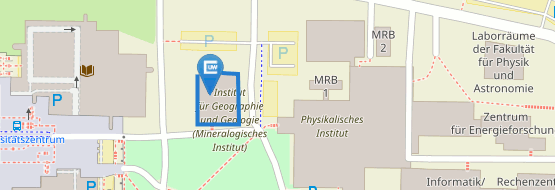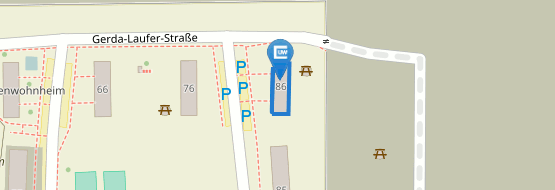MOVE – The migration behavior of migratory birds depending on settlement patterns and structures

For the first time ever in human history in 2007 a larger share of the global population lived in urban instead of rural areas. This trend is supposed to persist as the world population is predicted to continue growing, with the major share of the growth expected to be carried by urban areas. As a result of population growth and rising standards of living, settlements expand and densify increasingly and in turn can pose a threat to the fauna. On the one hand important habitats within settlement areas get incrementally lost. On the other hand adjacent natural habitats experience an increasing anthropogenic reshaping. The white stork (Ciconia ciconia) is a well-known European migratory bird and, being an anthropophilous species, lives in close association with humans. It is known that the bird harnesses settlement structures, e.g. as breeding sites. However, no detailed knowledge exists on the connection between settlement morphology and movement as well as behavioral patterns of the white stork to date. Nevertheless, in the light of increasingly transforming and expanding settlements it is of crucial importance to examine whether particular settlement morphologies influence breeding, stopover, foraging and migration behavior in order to protect the already endangered species.
In this regard, the main objective of the dissertation project is to investigate whether, and if so, to what extent certain settlement patterns and structures as well as their amendments have a positive or negative impact on the white storks’ movement and behavior patterns.
In the scope of the dissertation, a unique data model will be generated by combining methods from the fields of “Urban Remote Sensing” and “Movement Ecology” and thus, allowing for a systematic analysis of potential correlations. Established remote sensing methods for classification of settlement areas shall be applied and advanced to derive large scale and comprehensive multitemporal information on horizontal and vertical settlement structures on continental, regional and local level. Additionally, further parameters like the share of green spaces and local air updrafts are going to be derived to integrate other potentially influencing environmental factors in the analysis, too. By applying methods from the field of “Movement Ecology” on GPS-tracked movement data of the white stork, information on particular spatio-temporal movement and behavior patterns (breeding, stopover, foraging and migration) of the species shall be gained. Within the main part of the dissertation the information generated from Earth observation and movement data will be used to develop novel animal-environment analyses and distribution models to systematically identify connections between settlement morphology and movement/behavior patterns of the white stork. Furthermore, projections on space utilization of the bird, using the multitemporal Earth observation data and the determined information on correlations, shall be made. Finally, potential changes of movement/behavior patterns are supposed to be identified and it shall be analyzed whether these correlate with changes in the settlement morphology.
The intended multi-scale and multi-disciplinary approach of the dissertation project enables to examine the influence of settlement morphologies (horizontal and vertical) on movement and behavior patterns of a migratory bird species for the first time.
The findings shall help planners and environmental agencies to develop suitable measures in order to maintain the habitat function of settlement areas for the white stork in the long term. Furthermore, the developed methodology shall provide a basis for examination of other species to promote an advanced understanding on correlations between the fauna and settlement morphologies in general.
Contact: Ines Standfuß



